Sensor Sweep: Black Starlight, Tales From the Crypt, Night Gallery, Toga Trash Novels
Monday , 23, October 2023 Sensor Sweep Leave a commentConan (Sprague de Camp Fan): The new Conan adventures are starting to 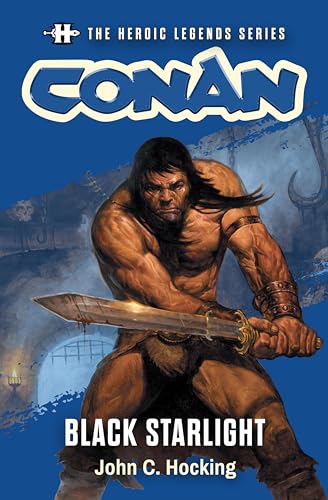 pile up faster than I can read them. This one is not really new though. It was originally serialized in Marvel Comics Conan the Barbarian (2019) issues 1 through 12. I didn’t read it then. Like most, I imagine, I decided to wait until all 12 issues were in my hand so I could read the whole thing in one or two sittings. But after a year passes other things are bought and other things are added to the pile.
pile up faster than I can read them. This one is not really new though. It was originally serialized in Marvel Comics Conan the Barbarian (2019) issues 1 through 12. I didn’t read it then. Like most, I imagine, I decided to wait until all 12 issues were in my hand so I could read the whole thing in one or two sittings. But after a year passes other things are bought and other things are added to the pile.
Games (Walker’s Retreat): Which means we’re getting Hyborea for ACKS. And that is a massive win. It’s been years since Mongoose did their surprisingly decent adaptation (the first edition) with its excellent The Road of Kings setting book, and I cannot wait to see that surpassed with which Macris and Dixon can do now that so much of Howard’s work either is Public Domain or will be soon.
D&D (Jon Mollison): It turns out I’m not the only one playing AD&D solo these days. I’m not even the only one with a blog discussing the results of my solo play. Today I present to you “Fort Cranium“, a newish quick recommendation today. He started with a 5×5 map of 30 mile hexes, which are subdivided into 5 mile hexes of their own, a large are with plenty of room to explore, loot, and colonize. Make sure you stick around for future episodes to see how a few dice rolls can spin up a wholy different experience.
Science Fiction (John C. Wright): The aliens behind the Monolith in Arthur C. Clarke’s 2001: A SPACE ODYSSEY are the same as the aliens signaling from Vega in Carl Sagan’s CONTACT. They both are part of the Galactic Overmind seeking the evolutionary transcendence of all life, and to elevate lesser races to maturity, as in CHILDHOOD’S END, also by Clarke.
Comic Books (Jon del Arroz): How Comicsgate DESTROYED Marvel And DC And Won The Comics Culture War.
Pulp (M Porcius): A few days ago, a knowledgeable SF fan, in a comment to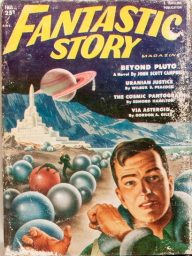 one of my blog posts about Edmond Hamilton, pointed out a bunch of SF stories by important writers which share plot elements with Hamilton’s “Fassenden’s Worlds,” a story we read in the year of our Lord Two Thousand and Seventeen. One of these stories was another Hamilton, 1935’s “The Cosmic Pantograph.” Sam Merwin, Jr. reprinted “The Cosmic Pantograph” in 1951 in Fantastic Story.
one of my blog posts about Edmond Hamilton, pointed out a bunch of SF stories by important writers which share plot elements with Hamilton’s “Fassenden’s Worlds,” a story we read in the year of our Lord Two Thousand and Seventeen. One of these stories was another Hamilton, 1935’s “The Cosmic Pantograph.” Sam Merwin, Jr. reprinted “The Cosmic Pantograph” in 1951 in Fantastic Story.
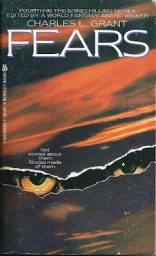 Horror (Por Por Books): Well, from 40 years ago, here we have a quintessential Paperbacks from Hell anthology: ‘Fears’ (280 pp.), published by Berkley Books in May, 1983. This was one of four horror anthologies edited by Grant for Playboy Press and Berkley Books, the others being ‘Nightmares‘ (1979), ‘Horrors’ (1981), and ‘Terrors’ (1982).
Horror (Por Por Books): Well, from 40 years ago, here we have a quintessential Paperbacks from Hell anthology: ‘Fears’ (280 pp.), published by Berkley Books in May, 1983. This was one of four horror anthologies edited by Grant for Playboy Press and Berkley Books, the others being ‘Nightmares‘ (1979), ‘Horrors’ (1981), and ‘Terrors’ (1982).
Fantasy (Ken Lizzi): L. Sprague de Camp’s The Tritonian Ring is bronze-age sword-and-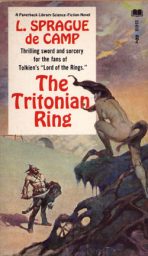 sorcery. In its pages he fits in lost continents, suggests origins for certain myths: medusa, gorgons, Amazons, etc., and provides a whirlwind tour of his pre-historic world of anxious, fallible gods, overly arrogant wizards, and bizarre societal habits. The driver of the narrative is the quest of prince Vakar to find the thing the gods fear the most in order to thwart an invasion of his kingdom instigated by the gods. The result is an episodic adventure full of journeys, heists, captures, escapes, duels, and full scale battles, all interspersed with idle dalliances.
sorcery. In its pages he fits in lost continents, suggests origins for certain myths: medusa, gorgons, Amazons, etc., and provides a whirlwind tour of his pre-historic world of anxious, fallible gods, overly arrogant wizards, and bizarre societal habits. The driver of the narrative is the quest of prince Vakar to find the thing the gods fear the most in order to thwart an invasion of his kingdom instigated by the gods. The result is an episodic adventure full of journeys, heists, captures, escapes, duels, and full scale battles, all interspersed with idle dalliances.
 T.V. (DMR Books): I will be not only contemplating the current state of entertainment but also briefly reviewing “The Return of the Sorcerer” (episode 1, season 3) of Rod Serling’s Night Gallery, because it is, I feel, one of the best episodes in that series, it is good fun for a Samhain night, and said episode was inspired by the short story “The Return of the Sorcerer” by Clark Ashton Smith, who is one of my favorite writers (I have shared my thoughts about his work in a previous article).
T.V. (DMR Books): I will be not only contemplating the current state of entertainment but also briefly reviewing “The Return of the Sorcerer” (episode 1, season 3) of Rod Serling’s Night Gallery, because it is, I feel, one of the best episodes in that series, it is good fun for a Samhain night, and said episode was inspired by the short story “The Return of the Sorcerer” by Clark Ashton Smith, who is one of my favorite writers (I have shared my thoughts about his work in a previous article).
Conan (Rough Edges): Having read John C. Hocking’s two Conan novels, CONAN AND THE EMERALD LOTUS and CONAN AND THE LIVING PLAGUE (both of which are soon to be published in an omnibus volume, by the way), I expected to like his novella BLACK STARLIGHT, the second in Titan Books’ new series of short fiction based on Robert E. Howard’s characters. I was not disappointed in the least.
Horror (Book Graveyard): The 1978 book sequel to the 1977 smash hit The Howling,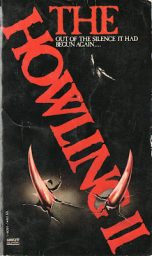 both by Gary Brandner. To be clear, both books were before the movies. The original Howling movie came out in 1981 and the movie sequel Howling II: Your Sister is a Werewolf came out in 1985. The first movie is roughly based on the first book whereas the second movie has absolutely nothing to do with the second book EVEN THOUGH Gary Brandner helped write the screenplay.
both by Gary Brandner. To be clear, both books were before the movies. The original Howling movie came out in 1981 and the movie sequel Howling II: Your Sister is a Werewolf came out in 1985. The first movie is roughly based on the first book whereas the second movie has absolutely nothing to do with the second book EVEN THOUGH Gary Brandner helped write the screenplay.
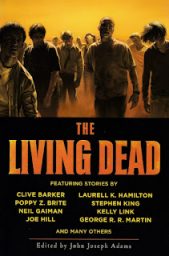 Horror (Chimney Sweep Reader): For zombie literature neophytes, this is an excellent place to start because reading these stories can make one realize there are far more ways to think about zombies than what you may have experienced from George Romero or The Walking Dead.
Horror (Chimney Sweep Reader): For zombie literature neophytes, this is an excellent place to start because reading these stories can make one realize there are far more ways to think about zombies than what you may have experienced from George Romero or The Walking Dead.
Horror (Paperback Warrior): Joe R. Lansdale(b. 1951) broke onto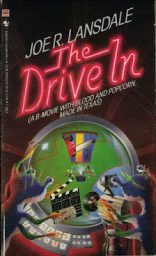 the scene in 1981 with a full-length serial killer police procedural called Act of Love. The aptly-titled novel lived up to its name, sparking a literary romance with readers for five decades. He’s penned countless novels, series installments, graphic novels, adaptations, and edited numerous anthologies. His 1988 novel The Drive-In (A B-Movie with Blood and Popcorn, Made in Texas), published by Bantam, was nominated for a World Fantasy Award.
the scene in 1981 with a full-length serial killer police procedural called Act of Love. The aptly-titled novel lived up to its name, sparking a literary romance with readers for five decades. He’s penned countless novels, series installments, graphic novels, adaptations, and edited numerous anthologies. His 1988 novel The Drive-In (A B-Movie with Blood and Popcorn, Made in Texas), published by Bantam, was nominated for a World Fantasy Award.
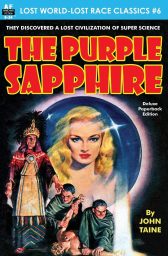 Science Fiction (Vintage Pop Fictions): John Taine’s The Purple Sapphire is a 1924 lost world adventure tale. John Taine was a pseudonym used by mathematician Eric Temple Bell (1883-1960) for his science fiction writing. General Wedderburn, a rather pompous English officer, approaches American gem dealer and adventurer John Ford with a proposal. The general wants Ford and his niece (and partner) Rosita to find his daughter Evelyn.
Science Fiction (Vintage Pop Fictions): John Taine’s The Purple Sapphire is a 1924 lost world adventure tale. John Taine was a pseudonym used by mathematician Eric Temple Bell (1883-1960) for his science fiction writing. General Wedderburn, a rather pompous English officer, approaches American gem dealer and adventurer John Ford with a proposal. The general wants Ford and his niece (and partner) Rosita to find his daughter Evelyn.
Historical Fiction (Glorious Trash): Over the past week I’ve received emails from two different people asking if I could re-post my old toga trash Amazon lists, which I posted a link to here on the blog back in 2010…back in those naïve days when I didn’t realize that certain words would set off search filters. And for that reason I will not link to that old post here…I mean things have gotten pretty Big Brother lately, so no need to set off any prudish AI bots.
Pulp (Grave Tapping): A new collection of four crime novelettes from pulp maestro Cleve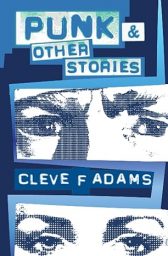 F. Adams is available at Amazon, as both a paperback and Kindle, titled Punk & Other Stories. Inside is a brief Introduction written by the always comparable… Me. The Intro is below in full and a link to the book is down there somewhere, too.
F. Adams is available at Amazon, as both a paperback and Kindle, titled Punk & Other Stories. Inside is a brief Introduction written by the always comparable… Me. The Intro is below in full and a link to the book is down there somewhere, too.
Books (Don Herron): The auction of Charlie Watts’ rare books realized a whopping $4.7 million, including a 26% buyer’s premium. Two of the books set world records. Charlie’s inscribed copy of The Hound of the Baskervilles went for $261,000, the highest price paid for any book by Doyle. His copy of Agatha Christie’s Thirteen Problems, the first to feature Miss Marple, brought $73,750, smashing the previous record for a Christie book by more than $15,000.
Fiction (Commando Bond): The difficult thing, of course, is finding an author or series that connects with us on a deep level like Fleming’s writing, and cinematography that excites like EON’s efforts. Over the 70 years of Bond’s history, there have been ample authors and screenwriters who have done their absolute best to capture that magic, but so often because their work is primarily meant to exist in that same vein, they often pale against Bond, or draw too many comparisons to be celebrated adequately on their own. That’s why as a passionate fan of Fleming and James Bond, I’ve found myself so immersed in the world of Jack Carr.
Comic Books (Comics Radio): The Incredible Hulk #200 ended with the Hulk,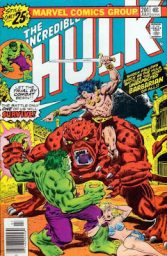 already shrunk down in size and inside the brain of Glenn Talbot (it makes sense in context) is shrunk further to prevent him from growing back to normal size while still inside Talbot’s brain. (It really does make sense in context. Read my review.)
already shrunk down in size and inside the brain of Glenn Talbot (it makes sense in context) is shrunk further to prevent him from growing back to normal size while still inside Talbot’s brain. (It really does make sense in context. Read my review.)
Comic Books (Frontier Partisans): I’m a little late getting this out there, but there’s still plenty of time to sign on with the Neal Fargo brigade. The crowdfunding campaign for Howard Chaykin’s Fargo: Hell on Wheels is underway, and you can join Wild Bunch at https://zoop.gg/c/fargo. I just put down my pledge.
Ghost Stories (Ghosts & Scholars Archive): The Ghosts & Scholars M.R. James Newsletter
Magazines (Por Por Books): Fantasy Tales was a semi-professional magazine published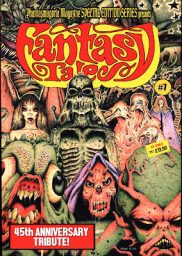 in the UK from 1977 to 1991 for a total of 24 issues (spaced over two Volumes). Editors Stephen Jones and David Sutton consciously modeled their magazine on the classic pulp Weird Tales, and thus, Fantasy Tales published as many (if not more) horror stories than fantasy, and featured black-and-white and graytone illustrations by artists such as Stephen Fabian and Jim Pitts.
in the UK from 1977 to 1991 for a total of 24 issues (spaced over two Volumes). Editors Stephen Jones and David Sutton consciously modeled their magazine on the classic pulp Weird Tales, and thus, Fantasy Tales published as many (if not more) horror stories than fantasy, and featured black-and-white and graytone illustrations by artists such as Stephen Fabian and Jim Pitts.
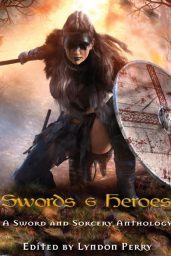 Review (DMR Books): Swords & Heroes is hands down the best anthology I have read thus far this year! The table of contents boasts a who’s who of authors writing S&S today. Many of the stories contained within feature series characters.
Review (DMR Books): Swords & Heroes is hands down the best anthology I have read thus far this year! The table of contents boasts a who’s who of authors writing S&S today. Many of the stories contained within feature series characters.
Tolkien (Notion Club Papers): Nick Groom. Twenty-first century Tolkien: What Middle Earth means to us today. Atlantic Books: London, 2023. pp xxiii, 451. Nick Groom, the author of Twenty-first century Tolkien, approaches Tolkien from almost the opposite side to myself; in terms of what we each think is significant about Tolkien the Man, The Hobbit and The Lord of the Rings; and more fundamentally, also, in what we think is good and true in the world!
Art (The One Ring): Ted Nasmith has been creating visions of Middle-earth since the early 1970s when he decided to send JRR Tolkien one of his early pieces–and the professor responded with encouragement! In addition to being the sole featured artist in 12 Tolkien calendars (2022 most recently), he worked closely with Christopher Tolkien to create the incredible illustrated Silmarillion in 1998.
Cinema (Kairos): In honor of the Spooky Season, and to give my regular readers a sample of the fun they’re missing out on, I here repost a patron exclusive from last month: my review of Tales From the Darkside: The Movie.
readers a sample of the fun they’re missing out on, I here repost a patron exclusive from last month: my review of Tales From the Darkside: The Movie.
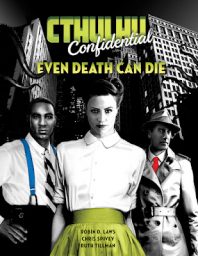 RPG (R’lyeh Reviews): Even Death Can Die is an anthology of scenarios for Cthulhu Confidential, the GUMSHOE One-2-One System version for Trail of Cthulhu, the roleplaying game of Lovecraftian investigative horror. Published by Pelgrane Press, Cthulhu Confidential is designed to be played head-to-head, with the player and his Investigator delving into a mystery, the Game Master helping to facilitate this and tell the story of the Investigator’s efforts.
RPG (R’lyeh Reviews): Even Death Can Die is an anthology of scenarios for Cthulhu Confidential, the GUMSHOE One-2-One System version for Trail of Cthulhu, the roleplaying game of Lovecraftian investigative horror. Published by Pelgrane Press, Cthulhu Confidential is designed to be played head-to-head, with the player and his Investigator delving into a mystery, the Game Master helping to facilitate this and tell the story of the Investigator’s efforts.
RPG (Monsters & Manuals): In the last post, I noted the tendency for armies – particularly imperial armies – to be highly heterogeneous even into relatively recent times. Particularly in ancient sources, or in the work of authors like Tolkien who are to an extent aping ancient sources, we see in descriptions of armies these long catalogues of different troop types of different origins, implying a great patchwork of peoples and fighting styles, all crammed together into one giant horde.
History (Cambrian Chronicles): In 1809, the Gough map at the Bodleian library in Oxford would reveal a bizarre secret: the existence of two small, mysterious islands off of the coast of Ceredigion in Wales. What made these islands stand out, though, was the fact that they no longer existed. There were no islands in this portion of Ceredigion Bay, and according to the maps known to historians today, there hadn’t been islands here since at least the 1600s.
History (Frontier Partsans): Tolstoy was born in an aristocratic family. He lived a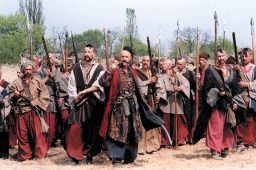 dissolute lifestyle for a time in Moscow. Hoping to escape his creditors at the time he enlisted in the army and served in the Caucasus. (Dostoevsky, the other Great Russian writer, also had trouble with his creditors. He wrote Crime and Punishment to pay his debts.) His experiences there formed the background to his novella The Cossacks and short story The Raid. (I found an old paper back made up of both stories at a library sell. They seemed to be collected together a lot).
dissolute lifestyle for a time in Moscow. Hoping to escape his creditors at the time he enlisted in the army and served in the Caucasus. (Dostoevsky, the other Great Russian writer, also had trouble with his creditors. He wrote Crime and Punishment to pay his debts.) His experiences there formed the background to his novella The Cossacks and short story The Raid. (I found an old paper back made up of both stories at a library sell. They seemed to be collected together a lot).
Fiction (JP Fukudai): Early in The Letter of Marque (1988), the twelfth entry in Patrick O’Brian’s splendid age of sail series, a character thinks, “How delightful it is to be at sea once more.” Amen, this reader thinks, because the previous novel, The Reverse of the Medal (1986), takes place almost entirely ashore, and the books are most compelling at sea. In that 11th volume, Jack Aubrey was removed from the list of post-captains and expelled from the British navy for his (innocent) involvement in a stock manipulation scandal.
Please give us your valuable comment